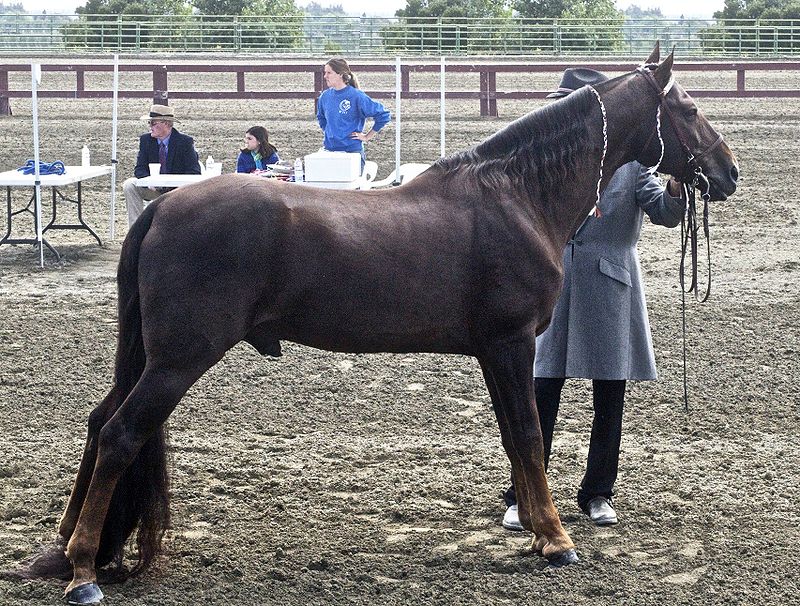The Tennessee Walking Horse
The breed was founded in the 18th century by planters in the southern United States. Originally called the Southern Plantation Walking Horse or the Tennessee Pacer or “Turn Row” because of its ability to go around rows of plants. The ancestor of the modern Tennessee Walking Horse or Tennessee Walker is the stallion Black Allan, who arrived in Tennessee in 1903. Sired by an American Trotter and Morgan dam, Black Allan was crossed with Canadian Pacer and Narrangansett (Narragansset Pacer).

The resulting offspring were combined with the American Saddlebred and the Morgan.
The result was a more powerful but less elegant version of the American Saddle. The Tennessee Walking Horse Breeder’s Association was founded in 1935. The breed was recognized in 1947.
Caractère et aptitudes du cheval
Endowed with a happy, docile character, this horse is robust, fast, and lively. Walking gait, half posed, half jumped. The forelegs rise straight and high, and the hindlegs, in a long stride, land 15 to 30 cm in front of the forelegs. In these natural, hereditary, loose gaits with raised forelegs, we distinguish the:
- flat foot walk: slow, gliding stride;
- running walk: fast walk with dissociated beats;
- rocking chair canter: gentle, collected canter, the head following the body’s movement with a characteristic waddle.
Utilisations du cheval
The Tennessee Walking Horse began life as a work horse, a means of locomotion for planters. It has become a good all-round saddle horse, harnessed, ridden, appreciated for exhibitions and as a popular show attraction.
Morphologie du cheval
Fairly strong head. Straight profile. Wide open nostrils. Small, pointed ears. Powerful, midline body. Strong, long, curved neck. Fairly high withers. Strong, sloping shoulders. Broad fore chest. Deep, ample chest. Short, strong back. Powerful loins. Strong, powerful hindquarters. Well tempered, hard, dry limbs. Good bone structure. Resistant horn. Tail set high, often English. Coat: all colors. Black and simple coats most common. Abundant manes. Size: 1.50 to 1.63 m.


